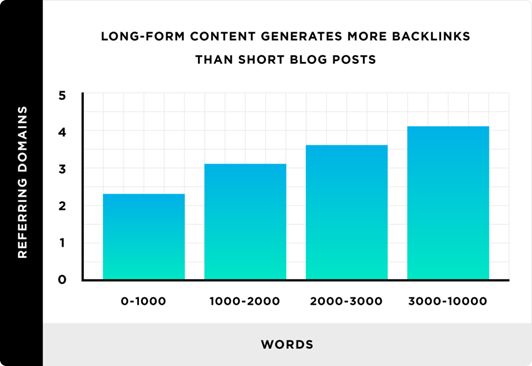5 SEO Tips for Nonprofits

Fall means several things – the return of sweater weather, amber leaves flooding the sidewalks, pumpkin spice latte pick-me-ups, a recurring trip to your neighborhood pharmacy for seasonal shields against ragweed pollen, but most importantly fall means planning for your annual dinner auction, gala, marathon, kids camp, etc.
Creating cause awareness for your organization is an essential component of success not only for seasonal events but for furthering your cause 365 days a year. You’ve been incorporating several tactics to create cause awareness, but your strength is face-to-face storytelling, and digital marketing may not necessarily be in your wheelhouse. Social media and paid advertising may be foreign to you, but what is most foreign is SEO.
What is SEO? Search Engine Optimization. SEO is a component of Search Engine Marketing. Simply put, it’s ranking on pages (preferably page 1) of search engines, like Google. By creating an SEO strategy, you’re not only able to increase organic traffic to your organization’s website but increase website traffic from potential new donors and supporters.
The Importance of SEO for Nonprofits
The first step is understanding the definition of SEO. The next is understanding why you should allocate time and resources to building your digital presence through SEO. So, why does it matter? Why will driving more individuals to your website matter for your nonprofit? Well, the driving factor is donor acquisition. Your mission relies on the organic growth of your database, and how you manage your new donors once they’ve contributed to your cause.
What’s great about SEO is that nonprofits have a fighting chance to gain positioning, even against for-profits or other nonprofits with bigger budgets, more volunteers, etc. Search engines are looking for credibility – is your organization credible? Do you have a presence online? Do you have followers? Are you a thought leader or expert of sorts when it comes to raising money for a certain cause? SEO allows nonprofits to increase cause awareness without having to create a huge advertising budget – which may be nonexistent for nonprofits running on mostly priceless volunteers. With the right resources and techniques, you can still implement an SEO strategy and do so in an effective and cost-efficient way.
Before we move into SEO tips for your nonprofit, it is essential to understand SEO ranking. See when a potential donor searches for volunteer opportunities or potential ways donate or get involved, they will rarely go to page 2. All the answers for them reside on page 1 of search engines. On average, 67.6% of clicks on search engines come from spots 1-5 on page one of Google. That’s where you want your nonprofit to be.
There are quite a few SEO tips, but this blog will cover 5 introductory tips that you can use to help your nonprofit increase cause awareness and work your way to the top of page 1:
- Purposeful and Shareable Content
- Create a Mobile Friendly Website
- Increase Your Word Count
- Make a YouTube Channel
- Continue to Evaluate SEO Performance
Purposeful and Shareable Content
The first SEO technique for your nonprofit is content creation – specifically shareable and purposeful content. More often than not, working in the nonprofit space requires passion and requires purpose. When it comes to boosting your SEO, brand awareness, etc., creating content and storytelling with the same passion that you use in your everyday role is a necessity. It is necessary because content creation needs to be strategic and not created just because you want to publish something, share something. This best practice especially applies to writing content, more specifically blog and article creation. You may not always know what to write about, but you do know why you are passionate about your cause and mission. And while you do need to take the time to share your organization’s mission and story, it also important to research what your potential donors are searching for and interested in reading about.
This research can lead to more purposeful content, increase engagement, and positively impact your SEO. When creating content optimized for search engines, your goal should be to create dynamic content that answers the questions and the keyword searches that your donors, potential donors, and those researching your cause, are actively looking for and interested in. Leveraging keyword research in your content strategy is key, and there are a variety of free tools online that can help you with identifying which topics you should focus your content on. One of those tools is AnswerThePublic. You can select a topic relating to your cause and this free resource will generate a report of actual keyword searches and questions that people are asking. Another way to generate new purposeful content is by updating old pieces. If this older content is performing well organically already, it is beneficial to update it and repurpose it to reflect any changes in trends, data, any images used, etc.
On top of creating purposeful and valuable content, you also need to create shareable content. Adding an optimized (for social media platforms) featured image (the recommended size for a thumbnail is 2:1 for platforms like LinkedIn and Facebook), using on-brand infographics, performing readability tests (the recommended readability score is a 60-70, which means an 8th or 9th-grade reading level), posting at the right time of day, creating lengthy pieces of enjoyable content, adding numbers to your title - these all play a role in whether or not your content is shareable. The likes, shares, and retweets you receive all impact SEO. You can publish a new blog every day but if no one reads it, it won’t impact your ranking on search engines. They are designed to give that coveted 1-5 spot to the content that drives engagement.
Create a Mobile Friendly Website
Nowadays donors are glued to their devices, specifically their cell phones. Maybe they’re playing Farmville or boomeranging their newest #ootd for their Instagram story or responding to the emails they got about the latest emergency at work – whatever they’re doing, it’s more than likely happening on their pocket computer. And when it comes to online searches, roughly 60% of online searches are done on a mobile device. This statistic backs the sentiment that you are doing your organization and your overall ranking a disservice by not making your website mobile-friendly - including elements like responsive images, and legible font sizes.
Mobile friendliness is essential but so is security and speed. Your site should be secure – nothing deters a potential donor quicker than an alert that warns them that the site may be at risk (all because you forgot to add or renew your SSL certificate). Your site should load quickly – after all the typical internet user will decide whether they want to stay on your site or leave within the first 15 seconds. Not only does a lagging site annoy potential donors and visitors and maybe prevent them from completing a donation and cause them to bounce off your site (leave after viewing only one page on your site), search engines, like Google, will take time on a site into account as a factor in overall performance and SEO.
Increase Your Word Count
The third step relates to increasing your word count. This study done by Backlinko shows that long-form content helps build links (and link building helps boost SEO) more effectively than short blog posts. Link building is the acquisition of hyperlinks from other websites to your own (for instance this link). The study also found that, on Google, the average word count in the first ten spots on page 1 is roughly 1,447 words.
Make a YouTube Channel
An underrated and sometimes overlooked SEO technique is creating and optimizing YouTube videos. This is important because Google can’t click on, view, and enjoy your content, so it will rely heavily on the title, the tags, engagement, and the description. The description is a key component here because not a lot of people add anything to the descriptions. Maybe they add one line about the video or a simple “hope you enjoy!” and that's a missed opportunity to add keywords and content that you can use to optimize your video, and ultimately, rank for certain defining keywords.
In the nonprofit space, it is especially important to lean on YouTube as a key part of your content creation. It’s one thing to write out your mission and your story – your why. But by creating a video verbalizing your mission, and maybe adding some individuals that have been the recipient of the funds you have raised, you are able to really showcase all the good you have done, and lives you have changed and, at the same time, get recognized on Google, and other search engines.
Continue to Evaluate SEO Performance
The 5th technique is to continue to evaluate SEO performance. When it comes to your SEO strategy and overall marketing strategy, it's important to always evaluate and re-evaluate what techniques are working and what techniques aren’t working. That evaluation can lead to needed adjustments and only benefit your organization in the long run. To further your cause, you need to understand how to attract and retain new donors and you can do that online – by building cause awareness through search engine marketing. Part of this analysis is identifying and understanding which page(s) performed the best, generated the most traffic and engagement and ranked the highest. You can use platforms and tools to evaluate your SEO performance, including Google Search Console and SEMrush.
Closing Thoughts
So, there you have it, folks. 5 SEO tips to help your nonprofit bring in more organic traffic. Feel free to also browse through the rest of our blog (how about checking out 12 Ways Your Nonprofit Can Succeed on Social Media) for more.
Interested in building an online presence and creating unlimited donation pages that are mobile and SEO friendly? Contact us now for a free digital fundraising consultation and demo.


